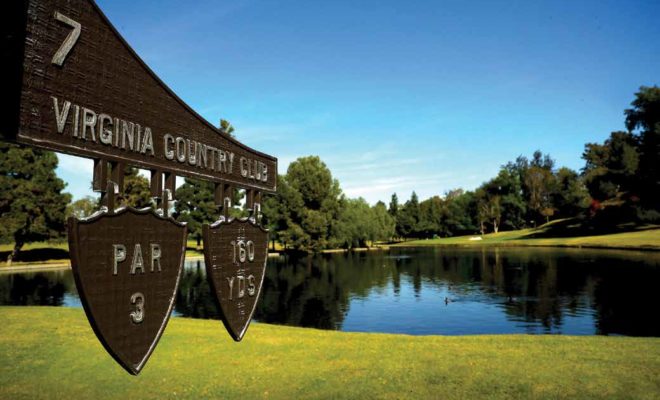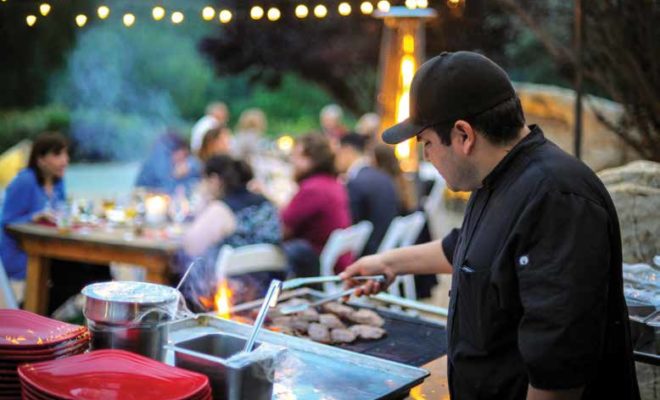A Snapshot of the Future

On August 3, 1962, developer Del Webb made the cover of Time magazine, with a banner headline reading: “The Retirement City: A New Way of Life for the Old.” While “old” isn’t remotely PC enough to pass muster today, and no PR guru had yet conceived of “active adult,” Webb thought he was on to something building a silver city chockablock with golf and other recreational and social amenities in the middle of the desert: Sun City, Arizona.
THE GOOD OLD DAYS
Though it was age-restricted, what Webb did was shatter the historic paradigm that “golf course living” was something only for blue bloods in an enclave setting around a classic-era gem of a golf course … or a drained Florida swamp. Since then, Sun City– and now Del Webb-branded communities expanded across the country, followed by other names big and small. Golf also made its way into hundreds of housing projects where no one turned you away if you lacked an AARP card.
Golf remains a desired pastime, even within the ranks of the younger generations, it just can’t solely be offered in old-school fashion, with an entire day at the club that includes a bout of gin rummy in the locker room and a regimental-tie dinner.
1980s to the mid-2000s, America’s tally of courses jumped 44 percent, constituting more than 16,000 golf facilities from sea to shining sea, according to stats compiled by the National Golf Foundation. Pellucid Corp., a leading golf industry consultancy, estimates that one-third of those course openings were tied to residential projects.
We all know what has happened since that peak in 2005/06: courses closing left and right and that near-daily ribbon cut-ting ceremony for a new course reduced to a celebratory happening maybe every four weeks as our game came face-to-face with oversaturation and a Great Recession. Daily fee or private, resort or residential, American golf development imploded to the tune of about a baker’s dozen or so new courses annually, with many industry analysts saying the market is still several thousand courses too heavy.
“I think it [golf as the centerpiece in housing projects] is likely to come back to some degree, but not in California, or at least not to the magnitude of development once seen,” said course designer Damian Pascuzzo, who has long teamed with TOUR player Steve Pate. “It is more likely to come back where land costs are less: the Mid-west, Carolinas, Texas. California is still overbuilt in terms of courses. Even when that equilibrium is restored, you’d need a special set of circumstances to pursue a 600-acre development with 180 acres of it going to golf. If it does come back in California, it will be in a nontraditional fashion.”
Nontraditional is a popular and needed concept in the larger game right now. Golf remains a desired pastime, even within the ranks of the younger generations, it just can’t solely be offered in old-school fashion, with an entire day at the club that includes a bout of gin rummy in the locker room and a regimental-tie dinner. The number one conduit of people coming to the game now is through TopGolf, for instance, so keep that in mind.
CAREFUL IS THE KEY
Yet not all is doom and gloom.
“When we hear, ‘No one will do golf,’ our response is, ‘We will do golf in a heartbeat,” shares Jeff Hinkle, senior vice president of Shea Homes Active Lifestyle Communities, “when and where it makes economic sense. Do we have adequate land? Sometimes golf is eliminated by that. If we are age-target-ing the project, does it work best with or without golf? The decision comes down to the highest and best use of the available land given the location, the positioning [of the development in the market], the open-space requirements and the golf demand and supply within the proposed community and the larger area.”
Jim Karras, western region vice pres-ident of community operations for Pulte Homes, which owns the Del Webb marque, says, “As the home-building economy start-ed struggling in 2007-08 and on into 2012, for the most part we stopped building golf courses. Even now that we’re out of that market condition and in a strong position from a housing standpoint, we are still very careful with our decision as to whether to add golf.”
Trilogy is a Shea Homes brand, and while we might tend to think of Trilogy as golf and gray, that corporate “sense” pro-duced the Polo Club development in Indio sans golf inside the gates, an active-adult golf community not far from there in La Quinta, golf properties Monarch Dunes along the Central Coast and Wickenburg Ranch in Arizona flying a welcome flag to families, and even urban-style offerings in Orange County and the Bay Area. For all its golf properties over the decades, Del Webb Rancho Mirage, for instance, has no internal golf, yet given what is all around the development there in the heart of the Coachella Valley, it is still positioned as a golf community.
SHORT IS THE NEW LONG
Well after Trilogy’s Monarch Dunes project was established, Pascuzzo and Pate re-turned to craft a 12-hole short course — to go with the existing full-bore routing — that is long on smiles as it kicks backside around the greens. In Wickenburg, the developer turned what was designed to be a driving range into Li’l Wick, a nine-hole par-3 course with several lighted holes, rock-n-roll blasting from speakers throughout the layout and an open-air grill room and bar on an island smack dab in the middle, with sporting events coming in on numerous TVs. Back in Florida, Tril-ogy took an existing-but-never-opened full-sizer down to an 18-hole short course on 45 acres that can be set up as a “regu-lation” course played out over three suc-cessive loops of six holes.
And it’s not just residential. I was just in Arizona and in golf-crazy Scottsdale I purposely put a par-3 resort course — the recently recrafted Mountain Shadows — on my play list. Go ahead, tell us how Bandon Preserve is just a pitch-and-putt.
The times they are a-changin’ because evolution is survival, and course builders/owners, residential or not, get that.
“Time is so precious now,” Hinkle says. “Golf robs a lot of that. Even avid golfers feel that way. Time is a huge consideration for golf customers. These short or alter-native courses are great examples of how to combat that. The industry won’t completely revert to this, and we won’t within our business model, but this is a snapshot of golf in the future.”
Grandad’s game has changed, even if it often takes place in his back yard.











